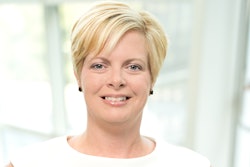Using secure messaging alongside traditional telephone communication between radiologists, radiation oncologists, and other medical specialists can add to workflow burden, according to a study published June 20 in JAMA Network Open.
Researchers led by Sunny Lou, MD, PhD, from Washington University in St. Louis, MO, found that after adjusting for sex, individual preferences, and clinical work settings, months with increased secure messaging use also had increased telephone use.
“This result is consistent with prior research showing that the use of new workplace communication channels may not mitigate the use of existing channels, highlighting the possibility that secure messaging may be associated with worsened communication burden and interruptions when not used thoughtfully,” Lou and co-authors wrote.
Traditionally, clinicians have communicated with one another through the telephone to relay patient care information. However, recent additions to communication technology such as mobile devices, electronic health record (EHR) systems, and text-based secure messaging platforms aim to streamline clinician-to-clinician communications. Previous research suggests that the use of these newer technologies has increased rapidly over the past five years.
But there are a lack of data linking secure messaging to clinician communication practices. The investigators noted that, while secure messaging could replace interruptive phone calls, it could add to communication burden by being used alongside telephones.
The Lou team studied the potential association between secure messaging and telephone use.
Almost all resident physicians at Barnes-Jewish Hospital, also in St. Louis, between August 2022 and January 2023 were issued a smartphone at residency enrollment with instructions to use it for workplace communication. They used the same phone throughout their residency. Lou and colleagues extracted metadata on monthly telephone minutes and EHR-integrated secure messaging use.
The study included 1,057 resident physicians and 5,995 person-months (a metric that expresses the effort that the resident physicians devote to projects). Of the total cohort, 94 were radiologists and 16 were radiation oncologists. The study also included 18 medical specialties and 231 clinical rotations.
Each resident sent or received a median of 148 secure messages. They also used a median of 166 telephone minutes per month. Radiologists and radiation oncologists in the study had among the lowest respective volumes of secure messaging use, but radiologists reported using zero monthly telephone minutes.
| Communication trends among radiologists, radiation oncologists | ||
|---|---|---|
| Type of clinician |
Monthly secure messaging volume |
Monthly telephone minutes |
| Radiologists |
25 |
0 |
| Radiation oncologists |
31 |
215 |
Orthopedic surgeons reported the highest secure messaging volume (1,370) while neurosurgeons reported the most monthly telephone minutes (1,203).
However, radiologists were second only to general surgery among clinical rotations when it came to included person-months at 498. Radiation oncologists ranked 16th, with 88 person-months.
In their analysis, the team reported that moving from the 25th to 75th percentile (from 25 to 561 messages per month) in monthly secure messaging volume was significantly tied to an increase in monthly telephone call minutes of 73 minutes (p < 0.001)
The study authors highlighted that their results point to secure messaging use being associated with worsened communication burden and interruptions when not used thoughtfully.
“Although secure messaging has potential advantages, further research is needed to understand clinician communication preferences and the best strategies for secure messaging use to minimize burden,” they wrote.
The full study can be found here.



















